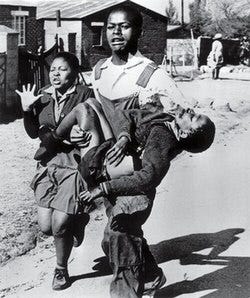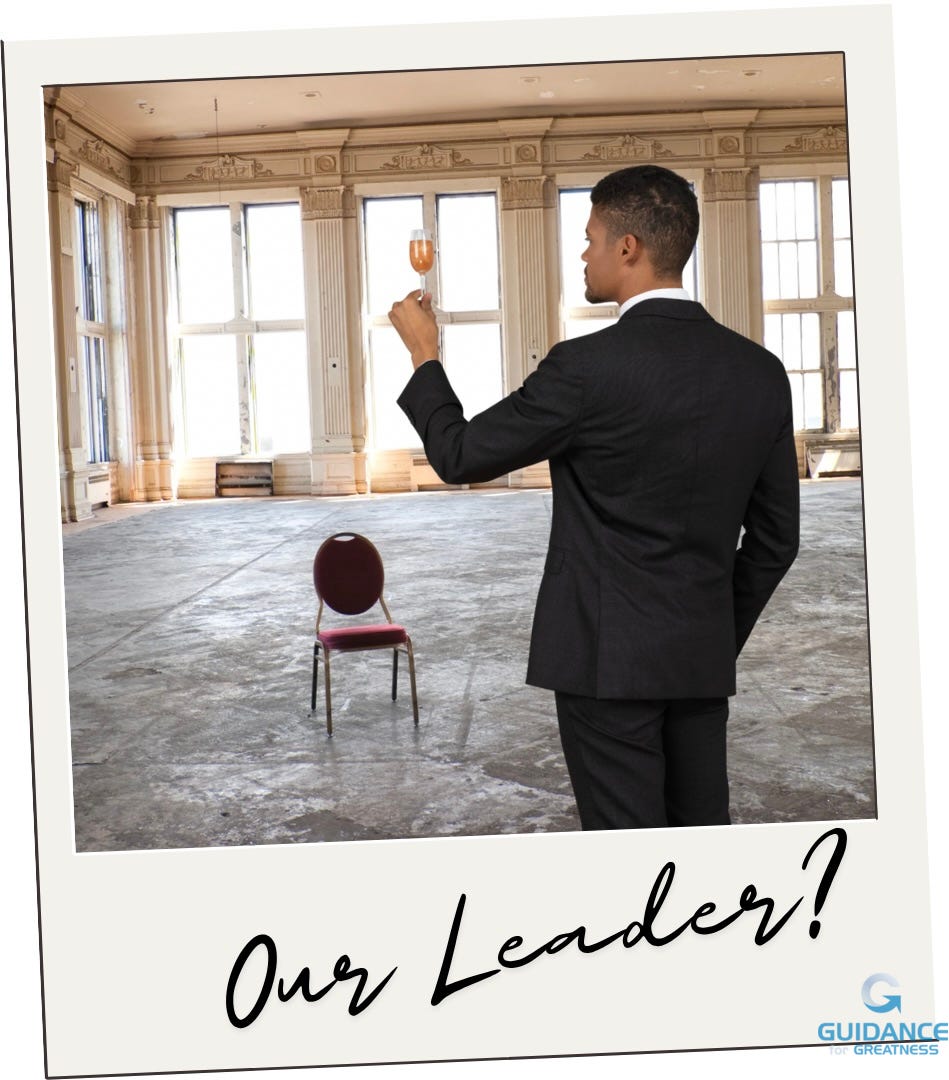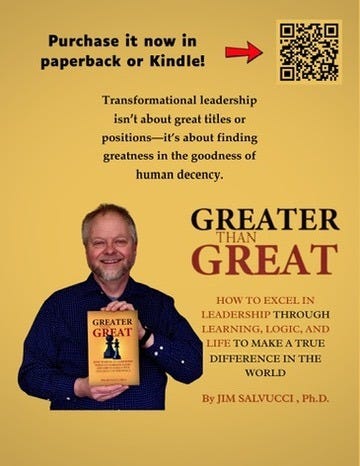I don’t know about you, but I’ve had it with all those guru-driven leadership books that challenge nothing and just tell you what you want to hear. Want something different, a book that will make you think and rethink what it truly means to be a great leader?
Then you’ll want to grab a copy of my new book, Greater than Great!
Find Greater than Great on Amazon. Now available in Kindle, paperback, and hardcover. Buy an extra one for that wonderful leader in your life. Or maybe you’ll want to sneak a copy onto the desk of your lousy boss.
Baby let me follow you down, baby let me follow you down
Well I'll do anything in this godalmighty world
If you just let me follow you down.
I would like to propose a toast. Please, everyone, raise a glass of champagne, beer, White Claw, kombucha, oat milk or whatever your strongest beverage of choice may be.
Here’s to the people who make true leadership possible, whose tireless efforts and devotion bring about change.
Here’s to the ones who do, who execute, who put into place. When the day is done and all is quiet, they remain unsung. Without them, though, nothing would happen.
Here’s to those who push from behind, who scout ahead, and who are there when the deal goes down.
Here’s to the individuals who complete the whole. Their loyalty and commitment glue the pieces together.
Here’s to the body that makes the head a functioning head. For what is a head without a body? A lifeless lump, a literal numb skull.
Here’s to the cooler heads who prevail upon their leader to slow down. They understand that the flock is not whole if one member, even the chief member, flies over the horizon alone.
Here’s to the fearless second in line whose choice starts a movement.
Here’s to the intrepid third in line without whom there is no line.
Here’s to the folks who shove and tug and climb and dig. They are everything because without them there is nothing.
Here’s to the people who practice patience and forbearance, for whom the wait is as much a journey as is the journey itself. As John Milton wrote, “They also serve who only stand and wait.”
Here’s to the journeymen and women who move steadily forward, driving all before them. Relentless.
Here’s to the colleagues who come to appreciate that the how and the why balance or even outweigh the what. That the who is we and that we often comprise the greatest share of the why.
Here’s to the bold who hold themselves and others accountable. Who have the temerity to keep the chief in line.
Here’s to the winning team whose greatest victory may be just being that team.
Here’s the followers without whom there are no leaders.
Not long ago my Substack colleague Josh Gratsch wrote an excellent piece called “The Confidence Paradox.” If you haven’t read it, I urge you to do so. Check out Josh’s other essays as well and do yourself a favor by subscribing to his blog, Pursuing Practical Leadership.
The last section of his essay, subtitled “The Collective Power of Humility,” got me thinking about the necessity of followership to leadership. Simply put, there can be no leader without followers. If one person runs off into the wilderness shouting, “Follow me,” but no one does, that person’s no leader; they’re just bear food.
Since reading Josh’s essay, I rewatched Derek Sivers’ wonderful TED talk called “How to Start a Movement.”
In it, Sivers presents a video in which a lone guy at an outdoor concert performs a manic dance in defiance of all sense of rhythm. Soon another guy joins him and then a third. Eventually, just about everyone rushes over to dance like idiots.
Sivers’ narration describes the group dynamics at play. He points out that the first dancing guy, howsoever intrepid, is just a “lone nut.” It’s not until the second guy starts dancing—an act of courage in itself—that we have the beginnings of a movement, which gets cooking with the third dancer.
Sivers observes that the “lone nut” cannot be a leader until he has followers. Up to then, he has no imitators. He has no movement. (Well, he has movement of a sort, I guess; what this guy truly lacks is moves.)
Think of the member of Congress who valiantly proposes an audacious bill but receives no support. That member is no leader, at least not at that moment.
Or the soldier who recklessly climbs out of the foxhole, shouting back to his platoon, “let’s go get ‘em,” before charging off toward the enemy. Alone. Again, no doubt brave, he’s no leader without a second and a third. That soldier—while perhaps heroic to the core—is Sivers’ lone nut.
The concluding moral of Sivers’ TED talk is simple: “If you really care about starting a movement, have the courage to follow and show others how to follow.”
When there’s a movement, when there’s action and progress, the leaders get all the credit, but as Sivers and Gratsch understand, it’s the collective “we” that makes the leader. I’m not saying this to denigrate leaders or dismiss their valor and tenacity. The point is—and every genuine leader knows this truth at least intuitively—leaders are nothing without followers.
Hero but No Leader
During the Apartheid era in South Africa, there were many heroes fighting for racial justice and freedom. The most well-known and important was Nelson Mandela. Mandela was a lawyer turned activist turned political prisoner turned politician.
He helped forge and then headed a movement that, through persistence, courage, and righteousness brought a peaceful end to the Apartheid regime in his country. He then went on to win the presidency in South Africa’s first fully democratic national election and served his country in that role and as a senior statesman with honor.
His actions upended the racist system that had long crushed Black South Africans under the heel of relentless oppression. Later, he became a stabilizing force and steered his country away from civil war and chaos. Mandela stands as one of the great world leaders of the twentieth century and an extraordinary example for anyone who wants to lead anything, from a small team to a national coalition.
But his leadership and movement would not exist without his first followers, who—like him—were fearless in their pursuit of justice.
Mandela is universally known, but have you ever heard of his countryman Mbuyisa Makhubu? During the 1976 Soweto Uprising–a protest initiated by black schoolchildren—many heroes emerged, but Makhubu is the one most closely associated with that bloody event. Even so, he is recognized for only one action.
On the first day of the demonstration, the Apartheid police opened fire on the protesting children, killing hundreds. One of the victims was a 12-year old named Hector Pieterson. For whatever reason, Makhubu—who was about 20–lifted the boy’s body from the ground.
A famous photo of the next instant is why we remember either of them. In it, we see an obviously distraught Makhubu carrying Pieterson’s limp body while the boy’s sister runs alongside them gesturing in desperate distress.

The photo made Makhubu internationally famous as well as a target for unrelenting police harassment. He eventually had to flee the country. Aside from a letter to his mother from Nigeria, we have no clue where he lived out his days or even if he’s still alive.
Meanwhile, the powerful photo of Makhubu cradling a lifeless Pieterson became iconic and helped alert the world to the outrages that white South Africans inflicted upon the majority Black population.
So we have two anti-apartheid activists, two heroes: Mandela and Makhubu. Only one, though, was a leader. Makhubu, as admirable as he was, acted alone in a singular moment. He inspired many, but he did not form—let alone lead—a movement.
In this sense—and with all due respect to his genuine heroism—he is Sivers’ lone nut. Whether Makhubu knew it or not, Pieterson was beyond saving. It was, in fact, nuts to pick up the body. No doubt doing so made him a tempting target for the rampaging and homicidal police. The photo certainly did.
Instead, Makhubu could have done absolutely nothing. He could have fled in the face of police firepower, and who would blame him? His life would have turned out utterly different—a life of anonymity at home with his mother. Instead, he chose to act, and the photo of that nutty, heroic choice helped tip worldwide public opinion and condemn him to exile.
The fact remains, though, that Makhubu had no first follower or any follower at all. Despite the abundance of dead and wounded, no one else picked up a child’s body and joined him. Unlike Mandela who—by many measures—led the whole world, without brave followers Makhubu could never transform from a lone hero into a leader.
———
So, here’s to those followers—the first follower, the second follower, and all the others who define the leader and forge a movement.
Without them, every trailblazer, every justice-seeker, every firebrand, every maverick, every hero, and every would-be leader—would be just some lone nut.
As a leader, have you ever considered the vital importance of your followers? As a follower, what is your role in bolstering the leader?
Great leaders know, understand, and appreciate the role of their followers, and I can help.
Unlock the Great Leader Within! Download my free resource, the Transform To GREATness Toolkit, now!
I look forward to hearing from you.
Intro and outro podcast theme music by LiteSaturation from Pixabay.
Like the sound of my podcast?
I use Descript to record and edit, and if you record sound and video, so should you. Descript’s AI assistance has transformed my process and improved my recordings. Now editing is a breeze!
Interested? Use my affiliate link to try Descript for free: https://get.descript.com/t8zotbxmi6ds.
Try it and let me know what you think.
Need an experienced speaker or a podcast guest? Invite me!
If you want a TEDx speaker for your event or corporate training, click on my Speaker’s Page.
Looking for an articulate, dynamic, and insightful podcast guest? Check out my Podcast Guest Page.
About Dr. Sal
I founded Guidance for Greatness to mentor rising professionals after serving 30 years in higher education as an English professor, dean, and VP.
In my speaking, writing, and coaching, I blend academic credentials (Ph.D. from Toronto, certificates from Harvard and ACE) with practical coaching certifications (Tiny Habits, Thrive Global) to offer something different: leadership development built upon human decency.
My mission? To guide today’s managers to become the next generation of great leaders.
I offer practical, values-driven strategies so that managers can lead authentically.
Why? Because great leaders aren't just effective managers—they're teachers whose example makes a true difference in the world.
It’s here!
Are you tired of paging through unchallenging guru-driven leadership tomes! Look for my new book, Greater than Great: How to Excel in Leadership through Learning, Logic, and Life to Make a True Difference in the World, out now!
Grab a copy for yourself and for that special leader in your life (or your lousy boss)!















Share this post